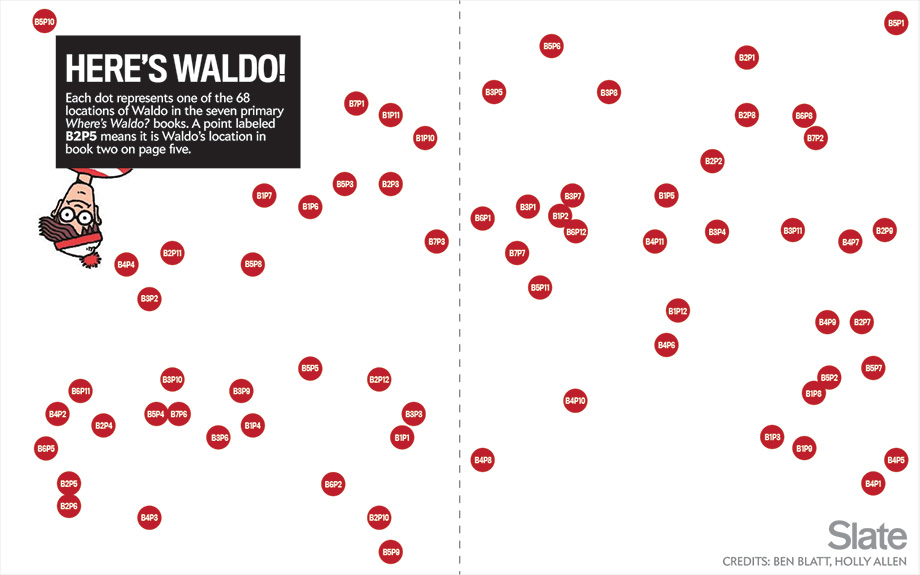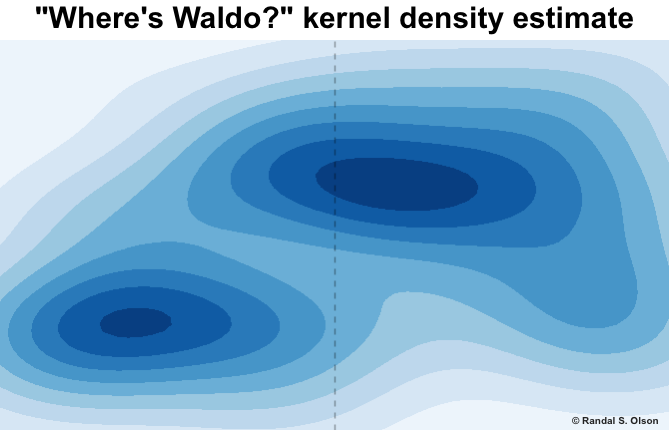Here's Wally: Your Search for the Elusive Waldo Has Been Optimised Using Math
Waldo doesn't stand a chance.
In partnership with
Since his invention in 1987 by illustrator Martin Handford, the mysterious man in a red and white striped shirt and dark rimmed glasses has stole hours of our youth as we tried to find him, again and again, and again. Not anymore.
After Slate tried (and failed) to find a perfect foolproof strategy for finding Wally, Randal Olson stepped in and dedicated his weekend (just one weekend) to the pursuit. Genius decided to optimise his lifelong hunt for the elusive Waldo using computers and math.
Below is the original chart for Waldo's coordinates in the primary seven editions of the Where's Waldo series, helpfully created by Slate:
Old mate Randy then did a kernel density estimation (we're not quite sure what that means, but that is what he did and it worked). He found that Waldo almost never appears in the top left corner, he's rarely on the edges of the pages and also never in the bottom right corner of the page.
Randy then bestowed upon himself the duty to figure out the optimal search strategy from there - never backtracking and taking as little time as possible. Basically finding a way of flitting your eyes between those 68 points in the fastest, most efficient way possible. In Randal's words, this wasn't that easy:
"Those 68 points can be arranged in ~2.48 x 1096 possible ways. To provide some context, that’s more possible arrangements than the number of atoms in the universe. That’s so many possible arrangements that even if finding Waldo became an international priority and the world banded together to dedicate the 8.25 million computing cores from the world’s 10 largest supercomputers to the job, it would still take ~9.53 x 1077 years — about 6.35 x 1067x longer than the universe has existed — to exhaustively evaluate all possible combinations. (Generously assuming that each core could perform 10,000 evaluations per second.)"
So instead of trying out each and every single pathway, Randal turned to genetic algorithms. (For those interested in hearing exactly how that works, here's the link.)
After many numbers and equations later, Randal found the optimal search pattern. He suggests starting at the top of the left page, dropping your eyes to the bottom, then darting your eyes to the upper quarter of the right page and then checking the bottom right half of the page. He said his method has meant that it's taken him less than ten seconds per page to find Waldo.
Now to just have an optimal search strategy for car keys, phones and hair pins.

Via Randal Olson, Slate








